In 2022, the Internet of medical things (IoMT) will be worth roughly $158 billion. The Medtech industry’s income is increasing. It is predicted to increase by 600 billion USD by 2024. IoT in healthcare is a booming technology since it aids patient engagement with doctors and insurance companies in determining a patient’s health state, remote patient monitoring, and empowering clinicians to give better care.
In the market, there are numerous healthcare apps for IoT medical devices, such as Fitbit and Medicine delivery apps. The rise in health consciousness and the usage of IoT to make medical equipment smarter has created demand for the best IoT development firm. Professional developers can create IoT devices and apps that can be used by healthcare organizations to monitor health conditions, handle medical data, repair medical equipment, and cut healthcare expenses.
Healthcare technology is successful from diagnosis to medication prescription and monitoring treatment outcomes. If you’re wondering how IoT may aid in healthcare, this article will go over the topic in depth. So, without further ado, let’s get right to the point.
How IoT Will Revolutionize the Healthcare Industry?
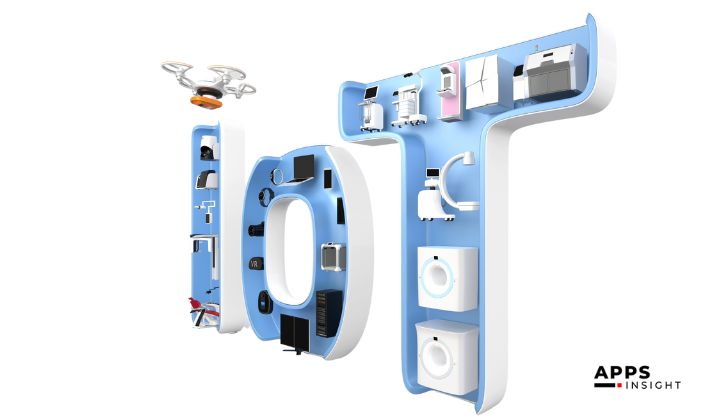
Doctors and patients are slowly using IoT. Connected ultrasounds, thermometers, glucose monitors, electrocardiograms, and more allow patients to track their health. This is essential for doctor follow-ups.
Many hospitals now use smart beds, which sense a patient’s presence and automatically adapt to the right angle and pressure to support them without a nurse.
Home patient care may be transformed by the IoT. Unfortunately, some individuals don’t take their medication at the right times or doses. Home smart medication dispensers might transfer data to the cloud and notify doctors of missed doses. More broadly, this technology could alert doctors to risky patient behavior.
Also Read: Do You Know? The Benefits of Cloud Computing for Small Businesses
Applications of IoT in Healthcare
With the rise of IoT technologies, the entire patient journey has been revolutionized. It has made doctors’ and nurses’ jobs much simpler and quicker. Numerous mHealth apps and Internet of Things (IoT) healthcare gadgets are utilized by the healthcare industry. In fact, by the end of the fourth quarter of 2021, there were 65,300 of these apps available in the Google Play store.
People can use apps with their wearable gadgets because they are embedded within the IoT device. Apps and IoT devices also aid in the collection of patient data. Internet of Things (IoT) medical gadgets have several uses in medicine. In order to broaden your understanding of this field, let’s read further.
Smart Thermometers

Taking a patient’s temperature regularly can help detect sickness in its early stages. By transmitting, storing, and analyzing temperature measurements in real-time, smart thermometers allow healthcare providers to improve patient treatment.
In addition, by linking these smart thermometers with heart rate and blood pressure monitors, you can acquire a more holistic understanding of a patient’s health.
Smart Insulin Pens
Smart insulin pens are just one more way that modern technology has improved people’s lives. These gadgets allow you to remotely monitor and treat your diabetes through the internet. When connected to an app that makes use of the internet of things, these injector pens make it easy for people with diabetes to control the amount of insulin they take.
These advanced insulin pens monitor blood sugar levels, record dosing information, and remind users when it’s time to inject themselves. Additional features include thorough information on diabetes levels and the ability to establish personalized alerts.
Smart Pills
The most effective method for tracking and analyzing a patient’s overall health is using these edible IoT pills. In the event that anything out of the ordinary occurs, these medications can also alert caretakers.
The pills are easy to use; after swallowing, they transmit a patient’s vitals to a receiver (a smartphone) via the digestive system.
Also Read: Advantages of AR/VR in Manufacturing Industry
Moodables
Moodables are gadgets that boost our mood and keep us feeling better all day long. Although it has the makings of science fiction, it is actually quite close to being true.
Both Halo Neurosciences and Thync have already begun developing it and have achieved remarkable strides. Moodables are wearable electronic devices worn on the head that improve our mood by stimulating the brain with mild electrical currents.
Advanced Computer Vision Systems
Drones equipped with computer vision and AI can now make decisions depending on what they see in the air, much like a human pilot.
Drones such as Skydio are able to avoid obstacles thanks to computer vision technology.
People who are visually challenged can also benefit from this technology since it allows them to navigate more effectively.
Healthcare Charting

Internet of Things (IoT) devices, like Audemix, ease a lot of the manual labor that doctors have to endure when keeping patient records.
Voice commands power it, and it records the patient’s information.
The patient’s records can be easily accessed and reviewed in this way. Approximately fifteen hours of doctors’ time each week is saved.
Consumable Sensors

Incredibly, edible sensors are a modern science marvel. These are tiny sensors the size of pills that keep an eye on the medication we take and alert us if they notice any changes in our bodies.
For a diabetic patient, these sensors can be quite helpful as they can reduce symptoms and offer early detection of serious health problems. One instance of this is Proteus Digital Health.
Benefits of IoT Applications in The Healthcare Industry
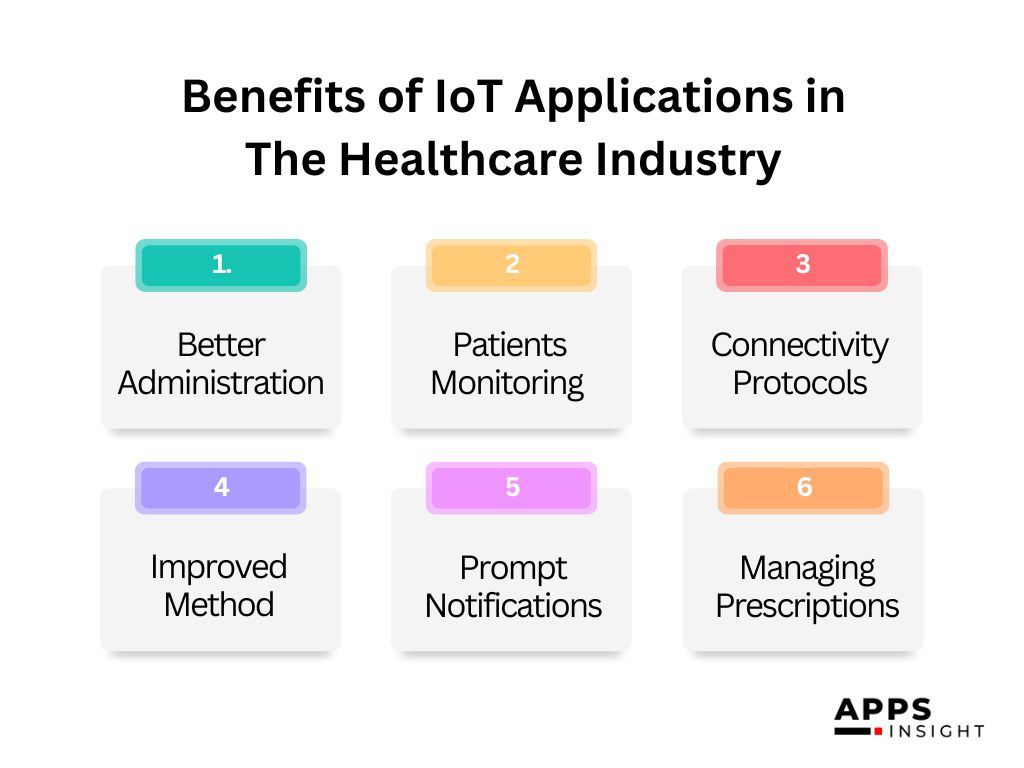
The widespread use of the Internet of Things (IoT) to aid in patient learning can help healthcare departments, practitioners, and experts reduce the likelihood of misconceptions. Data can be quickly and easily estimated and sent to a medical committee or a healthcare cloud application. Additional assistance in drawing understandable conclusions or suggestions from current data could be provided by AI-driven algorithms running on particular IoT devices.
1) Better Administration of Medical Treatment
Reduced costs are an additional major benefit of the Internet of Things in healthcare. It will be possible for non-critical patients to remain at home with the help of IoT in healthcare. Less time spent in hospitals and doctor’s offices is a direct result of the simultaneous monitoring and transmission of all critical data by a number of Internet of Things (IoT) devices to the health department. Along with better disease management, health facilities will have access to complete data generated from a large number of IoT devices. They will have access to larger and more detailed data sets in real time than ever before.
2) Monitoring Patients in Real-Time Through Remote Means
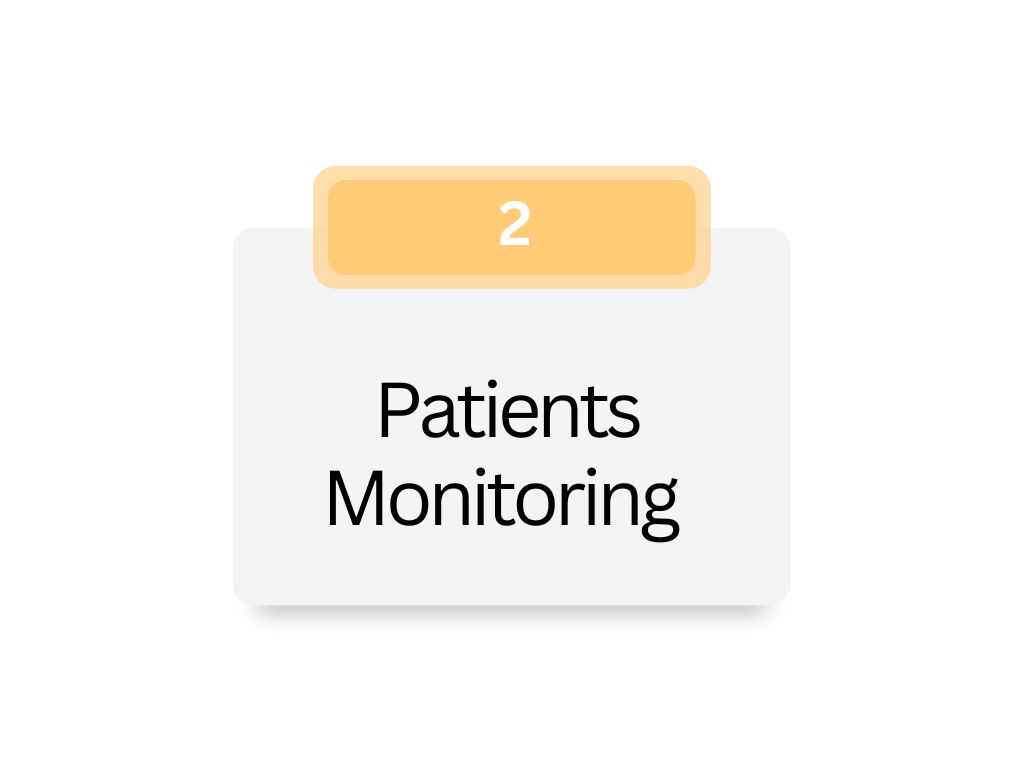
Patients’ readmission rates decreased by half as a result of remote supervision, according to a research. During medical situations like asthma attacks, heart failures, etc., real-time guidance through Internet of Things devices can save lives. The doctor can improve their counseling and gain a more accurate understanding of the patient’s condition with the use of real-time data transferred from each linked medical equipment, which can accumulate vital signs on the patient’s health.
3) Full Connectivity

The instruments’ diverse connectivity protocols allow medical staff to detect patients’ early signs of disease. With the use of healthcare mobility technologies, the Internet of Things can automate the patient’s responsibility workflow. At the same time as it improves healthcare delivery, it also makes it easier for machines to communicate with one another, share data, and learn from one another.
4) An Improved Method for Making Decisions
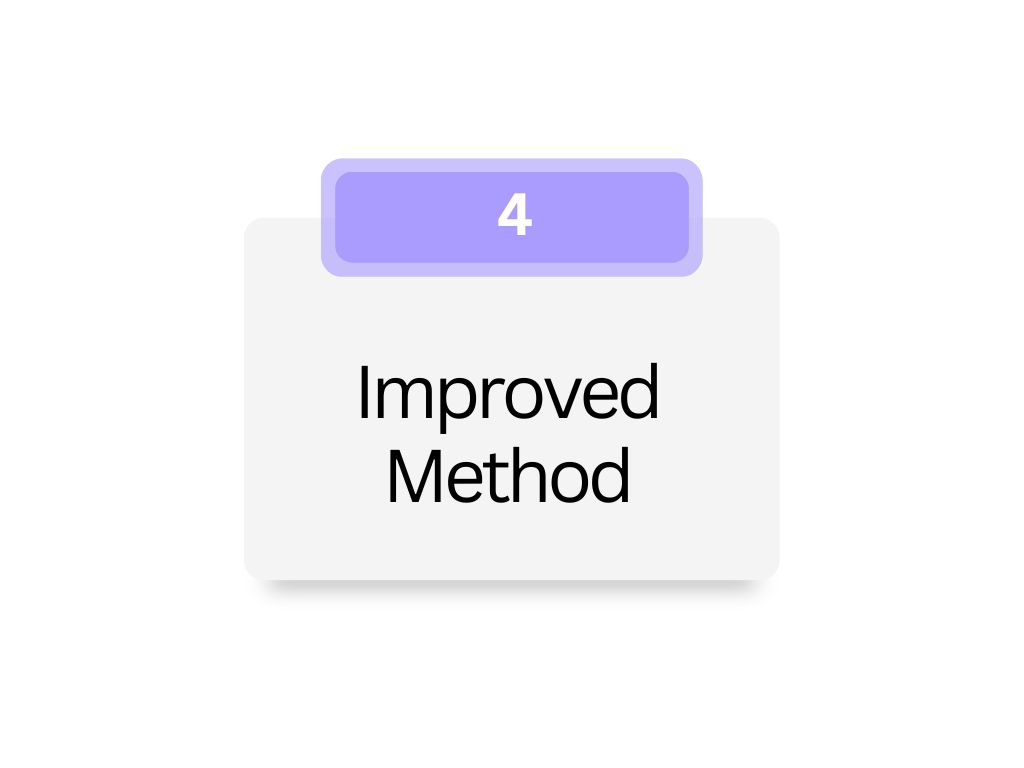
Medical professionals’ decision-making process will be enhanced by data-driven insights. Instantaneous receipt, reporting, and interpretation of the massive amounts of data acquired necessitates storage by IoT gadgets. Medical staff will be able to better treat patients by basing their decisions on accurate information thanks to this.
5) Prompt Notifications
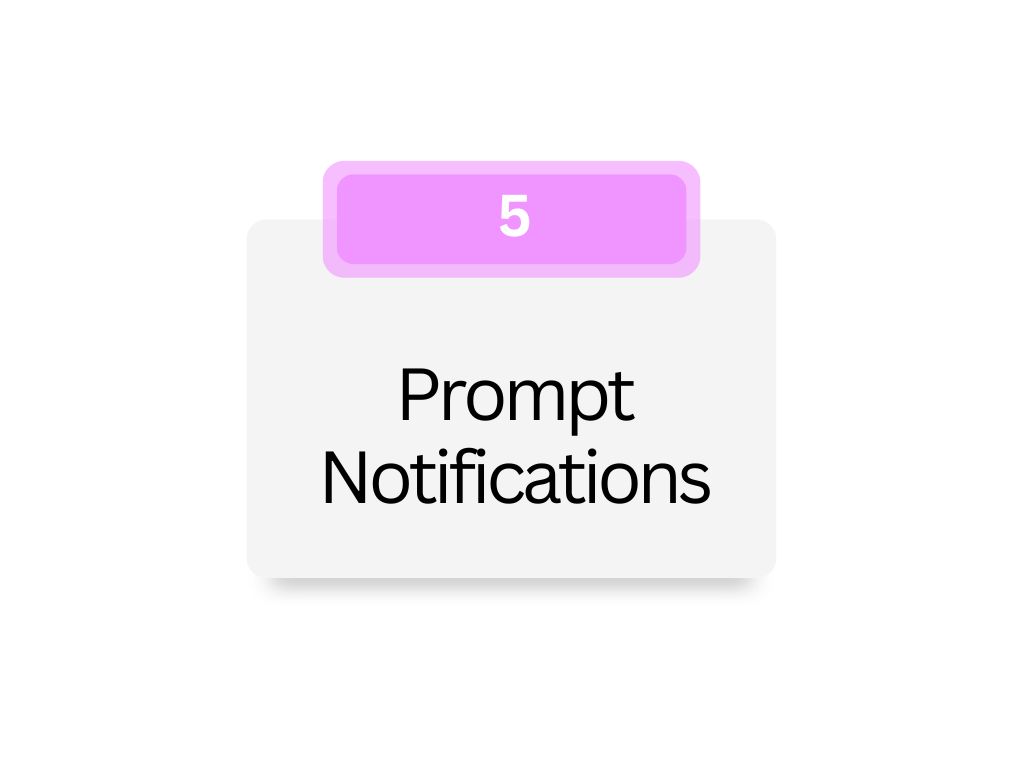
Thanks to the Internet of Things (IoT), medical equipment may collect vital data and send it to clinicians. The summaries offer a flawless assessment of the patient’s health, regardless of time or place. at situations where life is at danger, timely alerts are crucial.
6) Managing Prescriptions
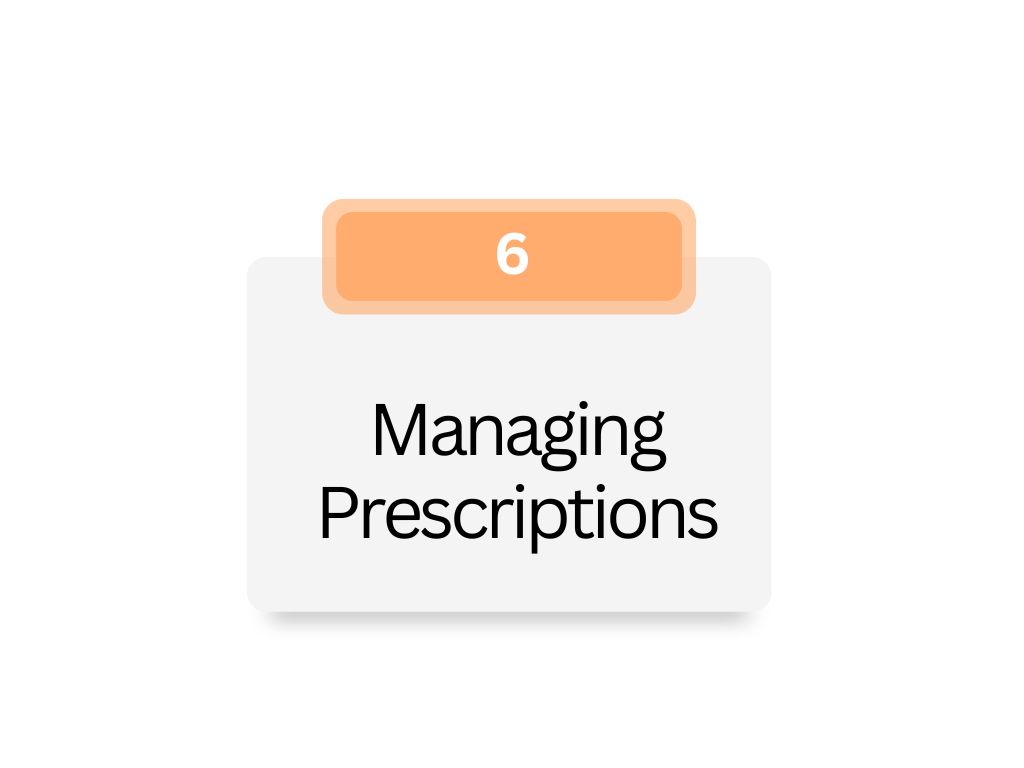
Keeping track of medication schedules has never been easier than with the advent of smart wireless pill bottles. Technology like this makes it easier for folks to do things like take their medication at the prescribed times, monitor their prescription supply, get restock reminders, and make the most of their scheduled appointments. Additionally, it can provide improved analytics to healthcare providers, allowing them to provide patients with more high-quality treatment, and it can keep the concerned person updated about medication doses.
In 2024, the healthcare industry will have advanced greatly thanks to a number of technologies, not the least of which is the internet of things (IoT).
How To Respond to Technological Change
Challenges of the IoT in Healthcare
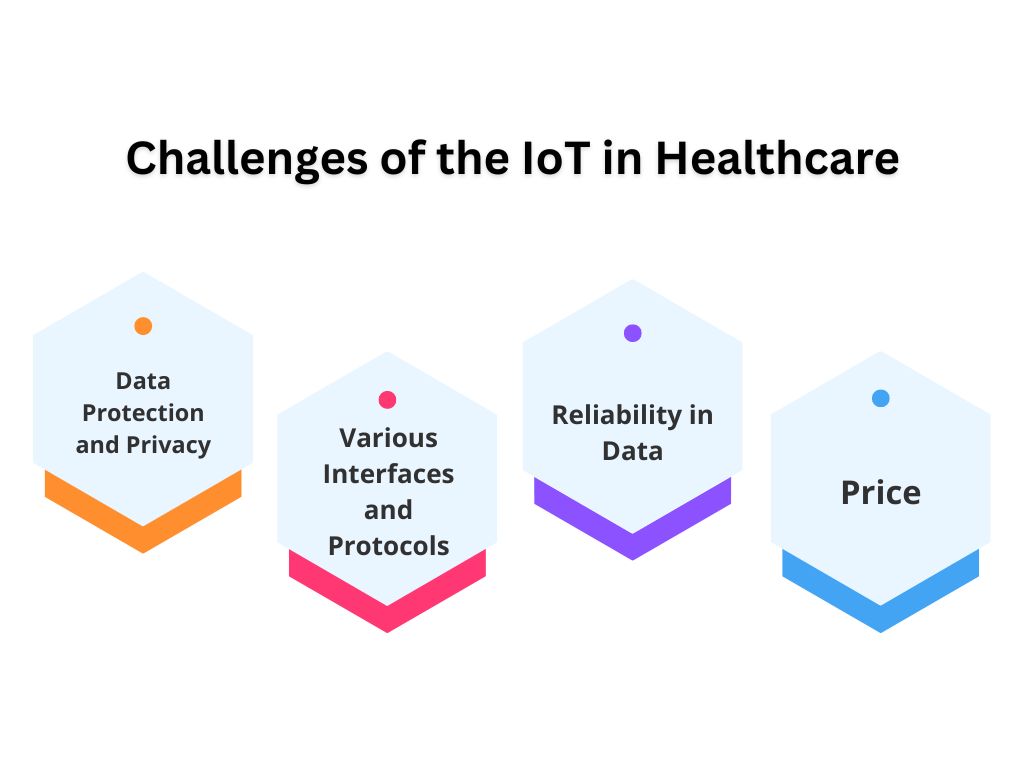
1) Data Protection and Privacy:
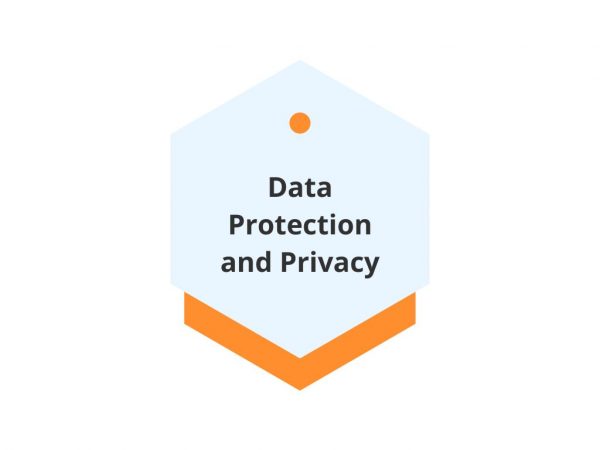
Data Security and Privacy are two of the most serious concerns that IoT faces. IoT-enabled mobile devices collect data in real time, however the majority of them do not follow data protocols and standards.
There is a great deal of uncertainty around data ownership and regulation. As a result, data held within IoT-enabled devices is vulnerable to data theft, making the data more vulnerable to cybercriminals who can hack into the system and jeopardise personal health information.
Fraudulent health claims and the fabrication of fake IDs for buying and selling pharmaceuticals are two examples of IoT device data exploitation.
2) Communication: Various Interfaces and Protocols
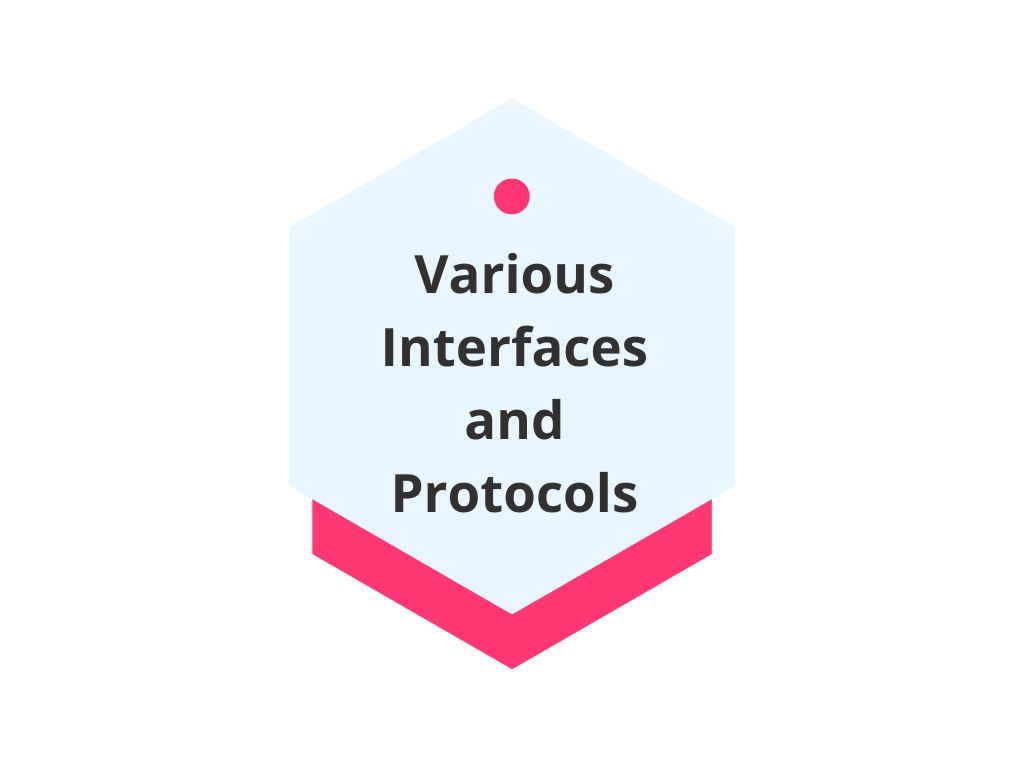
Internet of Things (IoT) application in healthcare is hindered by the integration of many types of devices. The lack of agreement among device makers on communication protocols and standards is the root cause of this obstacle.
This leads to a situation where every manufacturer develops their own ecosystem of Internet of Things devices, which are incompatible with each other’s devices and apps. Data aggregation cannot take place in such a setting according to any synchronous protocol. The lack of uniformity makes things take longer and limits the potential scalability of the Internet of Things in healthcare.
3) The Importance of Reliability in Data:
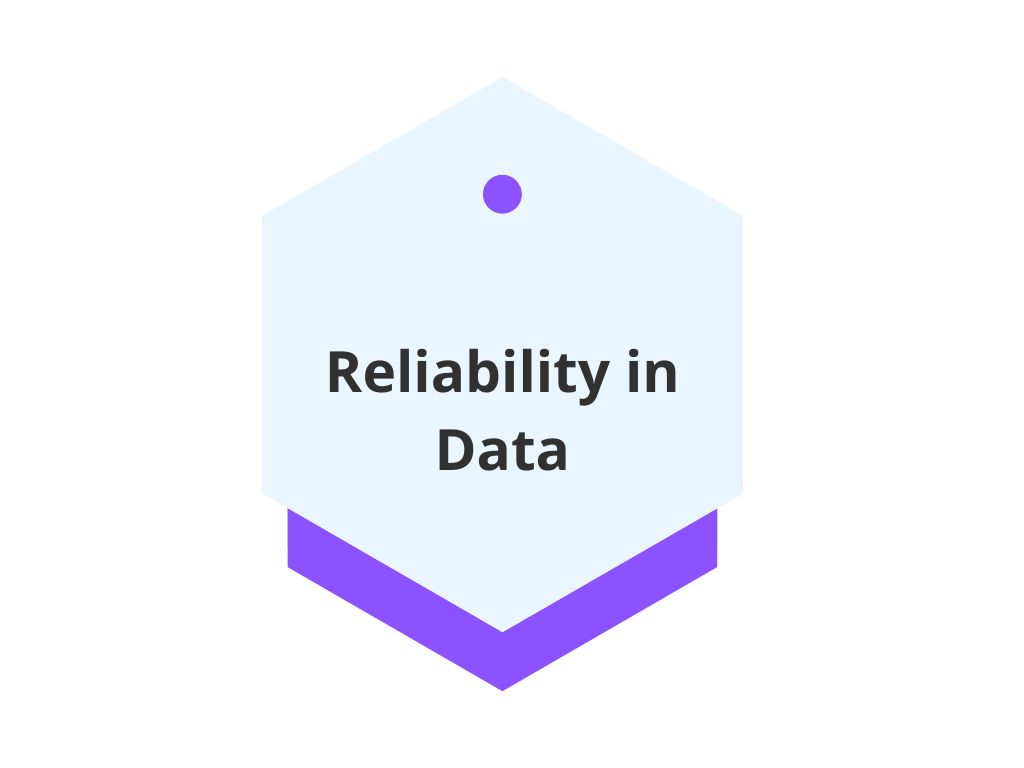
It is challenging to aggregate data for critical insights and analysis because of the non-uniformity of data and communication technologies. Data needs to be partitioned into manageable parts without overloading them with pinpoint accuracy for optimal data processing, which the IoT does in large quantities. In addition, the hotel industry’s decision-making process can be impacted in the long term by data overload.
4) Price:
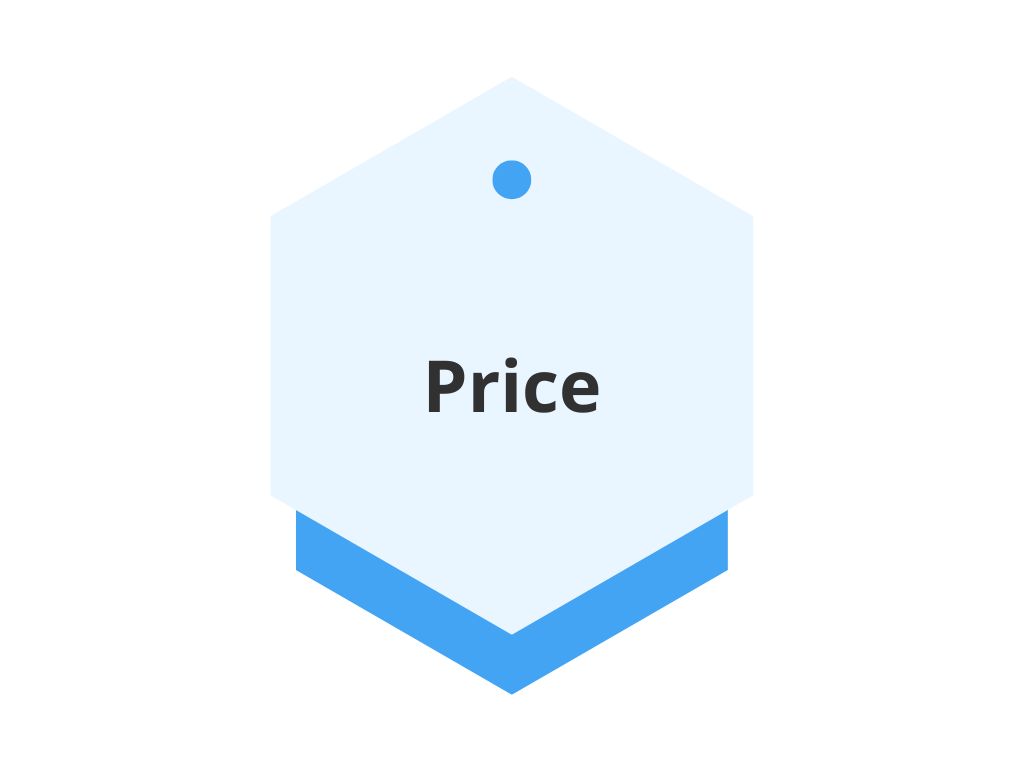
You might not be taken aback by this point’s appearance here. When thinking about healthcare mobility solutions that involve the Internet of Things (IoT), one of the biggest obstacles is the associated costs. Nevertheless, if the Internet of Things implementation addresses a real issue, the expenses are well justified.
The benefits to your company in the form of time and labour savings, enhanced business processes, additional revenue streams, and new business opportunities will more than justify the substantial investment required to develop an Internet of Things (IoT) application.
The Future of IoT in Healthcare
IoT has had a huge impact on the health care sector, and its future potential is fascinating. As the healthcare industry becomes more digital, IoT will play a critical role in moulding its future.
Here are some predictions for the future of IoT in healthcare:
Remote patient monitoring: With IoT, patients’ conditions can be tracked remotely, allowing healthcare providers to intervene as necessary. This will result in fewer hospital visits and readmissions, lowering healthcare expenses in the long run.
Predictive maintenance: IoT devices will assist healthcare practitioners in forecasting equipment breakdowns and maintenance requirements, allowing them to deliver uninterrupted care to patients.
Telemedicine: IoT gadgets will enable telemedicine services, allowing patients to consult with doctors remotely. This would be especially beneficial to people who reside in rural areas or have mobility issues.
Personalised medicine: IoT devices will enable the collection of real-time health data, which will subsequently be utilised to generate individualised treatment programmes for specific patients. This will result in more effective therapy and better patient outcomes.
Future Trends IoT in Healthcare 2024
Future Trends in Healthcare IoT
IoT has already had a significant impact in healthcare and is projected to develop even more in the coming years. The future of IoT in healthcare is bright, and it will bring even more disruptive improvements to the field as linked devices become more sophisticated and widely utilised. Let’s have a look at some of the trends that we might anticipate to see in the near future.
Analytics for Healthcare Data
As IoT devices create more data, hospitals will see the rising need to analyse this data as soon as possible so that decisions may be made based on the most relevant information. As a result, there will be a greater demand for real-time analytics tools that can assist healthcare organisations in converting enormous volumes of patient data into useful insights. Big data analysis and machine learning algorithms are routinely used to help doctors make better judgements.
IoT Healthcare Systems with AI
When it comes to merging AI and IoT in healthcare, there is a good likelihood that they will improve how doctors approach diagnostics and disease detection. One of the most important capabilities of AI in diagnostics is its capacity to quickly and precisely analyse large amounts of patient health data collected by IoT devices. Traditional diagnostic approaches rely on human interpretation, which can be flawed. With such crucial early-stage diagnostic skills, clinicians can intervene earlier to prevent disease progression before it becomes a serious health-threatening issue.
5G on Healthcare IoT
Because of its high-speed, low-latency Internet connection, 5G has the potential to revolutionise remote patient monitoring, doctor communication, and telemedicine. This technology facilitates speedier access to health information, enhances telehealth services, and allows for remote surgeries via high-quality video transmission. With complete information received by the device, IoT devices such as an internal defibrillator can promptly tell ER cardiologists to be ready for an approaching patient.
Final Thoughts
IoT has become an essential component in healthcare. It has provided several benefits like as remote medical support, real-time tracking, and data analysis, but it has also introduced a number of security risks in IoT.
Despite this, IoT applications continue to grow, with wearables, ingestible sensors, and smart video pills leading the way. IoT in healthcare has the potential to improve patient outcomes, lower costs, and promote preventive treatment. As a result, IoT is a crucial tool for healthcare professionals to use in order to give better treatment to patients.

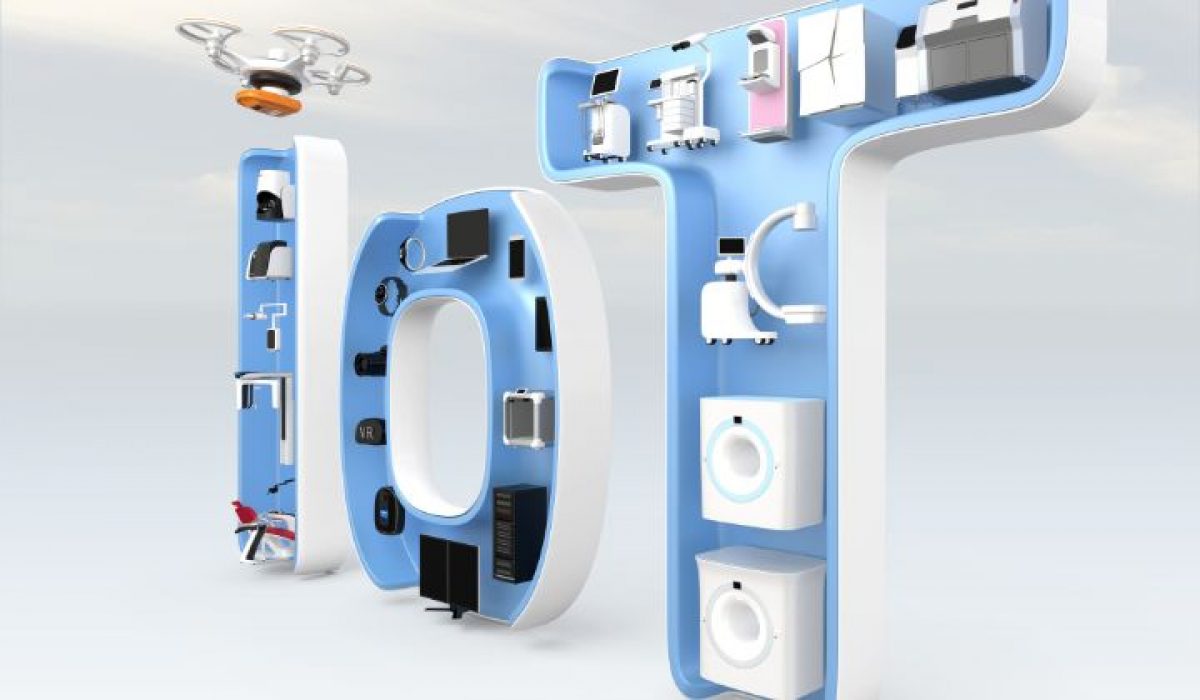
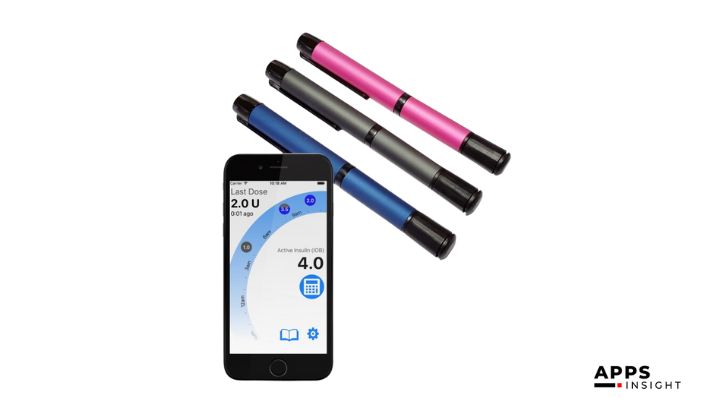
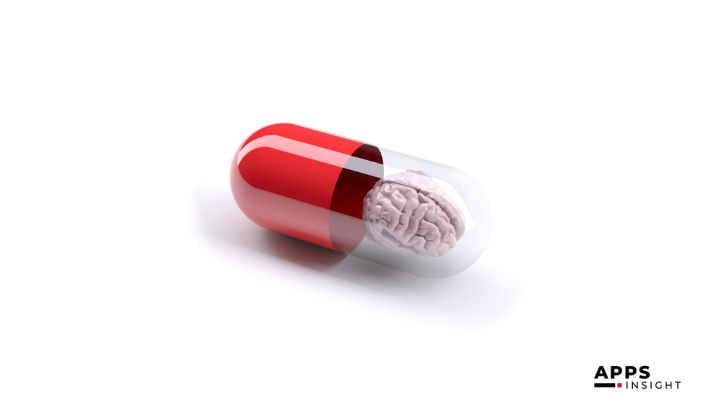

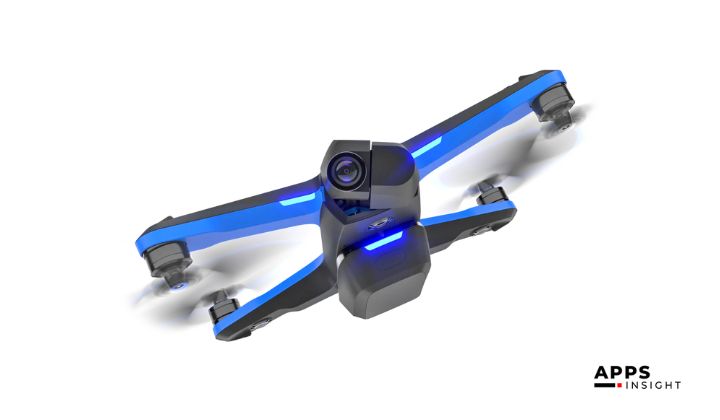
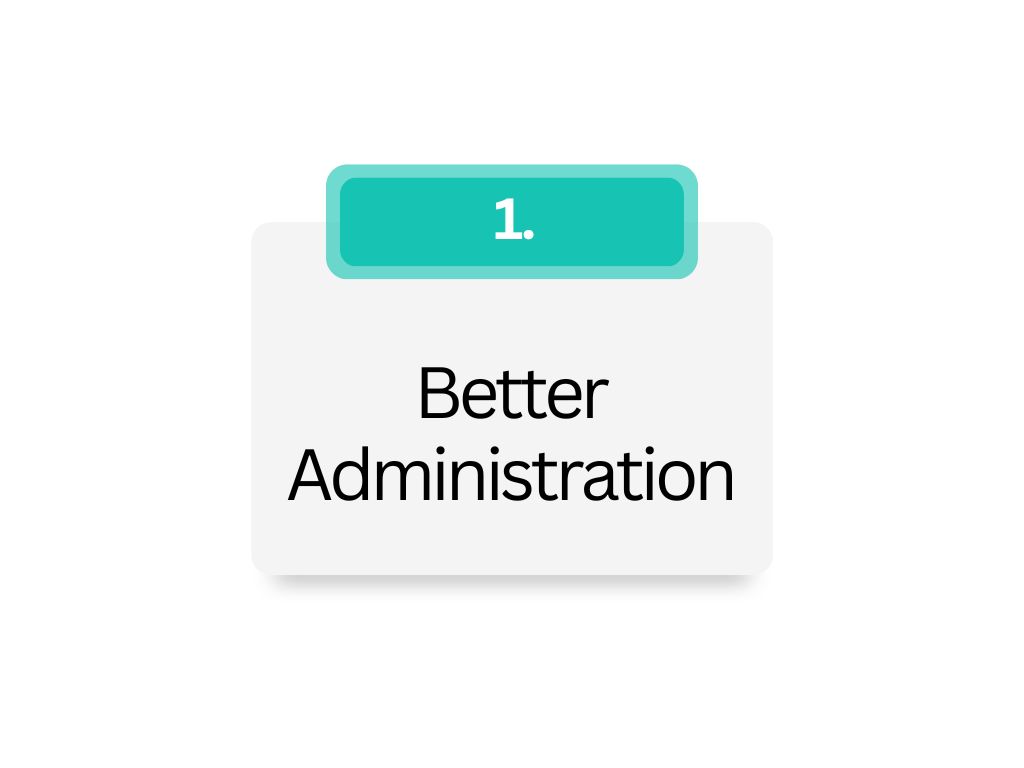


Pingback: How RFID Can Be Integrated with Emerging Technologies?
Pingback: The Impact of IoT on Business Efficiency 2024
Pingback: The Importance of Information Technology in Healthcare 2024
Pingback: The Role of IoT in Industrial Automation in 2024 » Apps Insight